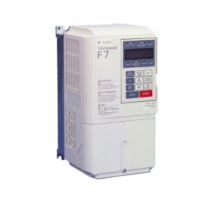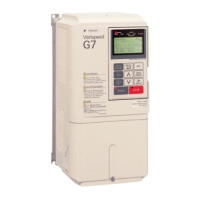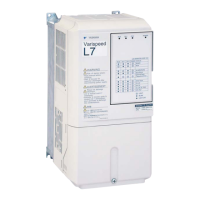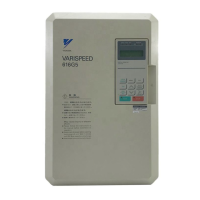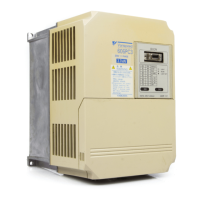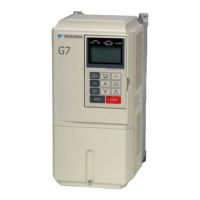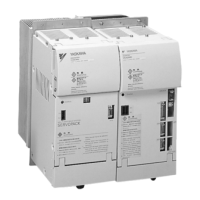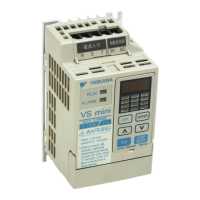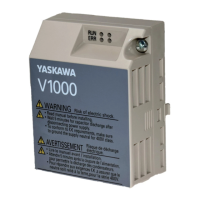7-4
OH3
Motor
Overheat 1
Motor Overheating Alarm
The Inverter will stop or will continue
to operate according to the setting of
L1-03.
The motor has overheated.
Check the size of the load and the
length of the acceleration, deceler-
ation, and cycle times.
Check the V/f characteristics.
Check the Motor Rated Current
(E2-01).
OH4
Motor
Overheat 2
Motor Overheating Fault
The Inverter will stop according to the
setting of L1-04.
The motor has overheated.
Check the size of the load and the
length of the acceleration, deceler-
ation, and cycle times.
Check the V/f characteristics.
Check the Motor Rated Current
(E2-01).
RH
DynBrk
Resistor
Installed Braking Resistor Over-
heating
Braking resistor protection function
set in L8-01 has operated.
The deceleration time is too short and
the regenerative energy from the
motor is too large.
• Reduce the load, increase the
deceleration time, or reduce the
motor speed.
• Change to a Braking Resistor
Unit.
RR
DynBrk
Transistr
Internal Braking Transistor Fault
The braking transistor is not operating
properly.
• The braking transistor is damaged.
• The Inverter’s control circuits are
faulty.
• Try turning the power supply
off and on.
• Replace the Inverter if the fault
continues to occur.
OL1
Motor
Overloaded
Motor Overload
The motor overload protection func-
tion has operated based on the internal
electronic thermal value.
The load is too heavy. The accelera-
tion time, deceleration time, and cycle
time are too short.
Check the size of the load and the
length of the acceleration, deceler-
ation, and cycle times.
The V/f characteristics voltage is too
high.
Check the V/f characteristics.
The Motor Rated Current (E2-01) is
incorrect.
Check the Motor Rated Current
(E2-01).
OL2
Inv Over-
loaded
Inverter Overload
The Inverter overload protection func-
tion has operated based on the internal
electronic thermal value.
The load is too heavy. The accelera-
tion time, deceleration time and cycle
time are too short.
Check the size of the load and the
length of the acceleration, deceler-
ation, and cycle times.
The V/f characteristics voltage is too
high.
Check the V/f characteristics.
The Inverter capacity is too low.
Replace the Inverter with one that
has a larger capacity.
OL3
Overtorque
Det 1
Overtorque Detected 1
There has been a current greater than
the setting in L6-02 for longer than the
setting in L6-03.
-
• Make sure that the settings in
L6-02 and L6-03 are appropri-
ate.
• Check the mechanical system
and correct the cause of the
overtorque.
OL4
Overtorque
Det 2
Overtorque Detected 2
There has been a current greater than
the setting in L6-05 for longer than the
setting in L6-06.
-
• Make sure that the current set-
ting in L6-05 and time setting in
L6-06 are appropriate.
• Check the mechanical system
and correct the cause of the
overtorque.
Table 7.1 Fault Displays and Processing (Continued)
Display Meaning Probable Causes Corrective Actions
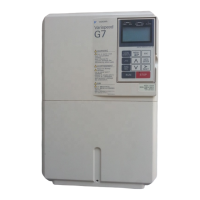
